Well – each time I think I have gone down my favorite rabbit hole researching a blog post for Recollections I quickly find myself tearing myself out of another one. I have planned to do a post this week on Easter bonnets for about a year now, and when I began, it sure was hard to stop! The history spans from a celebration of the coming of spring in the Victorian era to the current day, and each fact and photo is truly a reminder of how great it is to see the end of winter. It is also a celebration of femininity combined with creativity that I am excited to share with our readers.
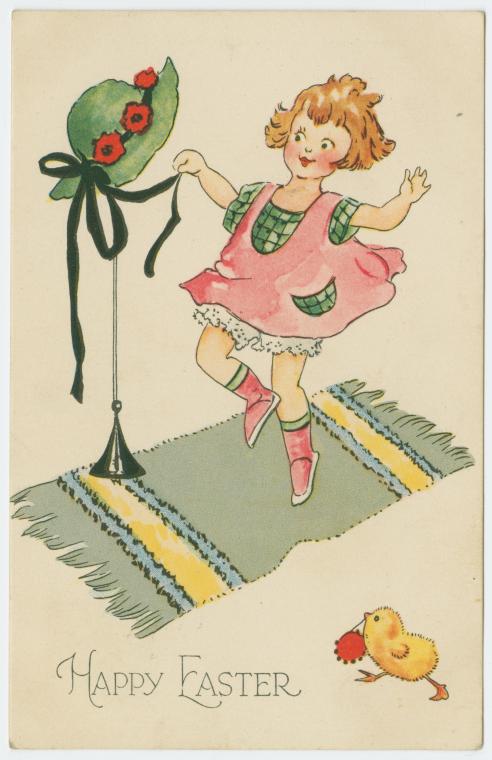
New Season, New Dress
The history of new, fresh clothes for spring or Easter has been around for hundreds of years. There is even a reference in Romeo and Juliet, which hit the stage in 1597, to the tradition when Mercutio says to Benolvio:
“Didst thou not fall out with a tailor
for wearing his new doublet before Easter? With
another, for tying his new shoes with old ribbon?”
It does make logical sense that in times of economic growth people would buy new clothes to symbolize the season of renewal. That the tradition would extend or be limited to a hat also makes sense, as until the 20th century hats were a near-requirement for appearing in public, and a winter hat was typically much different from one worn in the spring. It is also a striking way to freshen up a wardrobe without purchasing an entire outfit, though many women would do both.
Note: the term “Easter bonnet” refers to headwear related to this tradition as a tradition in and of itself. As you will see, it refers to all headwear worn to participate.
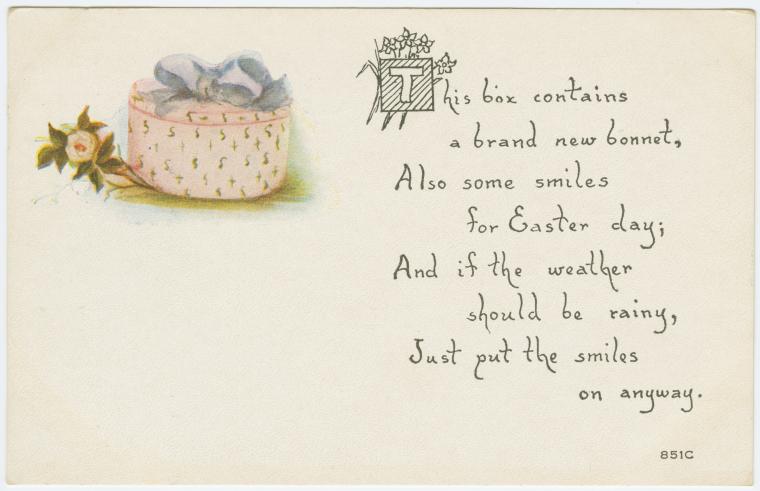
Victorian Easter Bonnets
By the Victorian era the tradition of Easter bonnets had been well solidified, especially in the United States. This is due to Americans being heavily invested in embracing uniquely American traditions during the 19th century, the enormous surge in the millinery industry and increasingly elaborate hats, and the creation of the Easter Parade in New York City.
The image below from an 1890s issue of Harper’s Magazine portrays a group of excited young women shopping for their Easter bonnets.
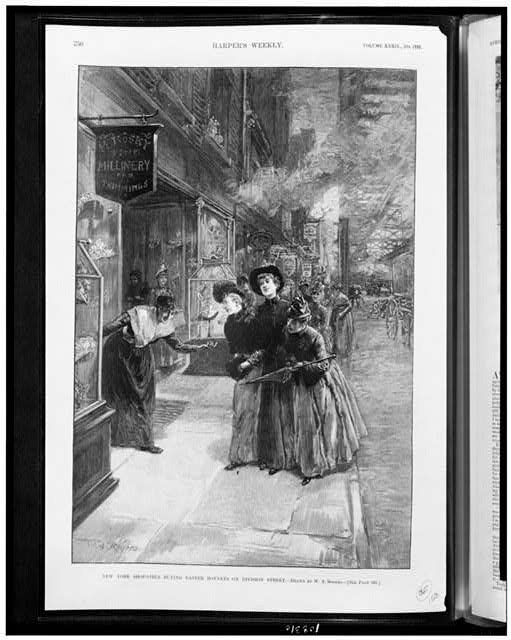
NYC Easter Parade
It is hard to pinpoint exactly why and how the New York City Easter Parade began, but what is known is that it was a fairly organic and natural evolution beginning in the 1870s when fashionable New Yorkers, wearing their new Easter digs, would gather on Fifth Avenue to show off and socialize. It grew and grew as a tradition, peaking in the 1940s and continuing today.
The below poem is from the back of a New York City restaurant from their 1955 brunch menu.
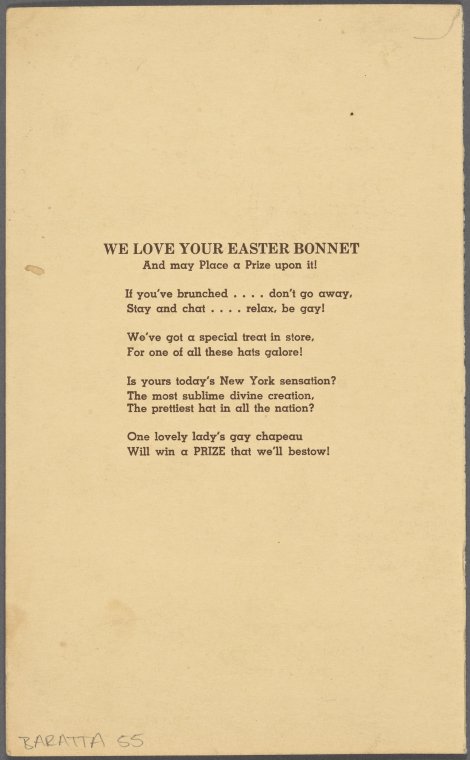
A growing tradition
The enthusiasm over buying a new bonnet for spring was such a well-known national event that it was featured on the cover of Puck magazine for many years. And it was done in a way that both celebrated traditional feminine roles, mocked women for their fashion choices, and ridiculed those who embraced progress. You can see these themes in the Puck covers below.

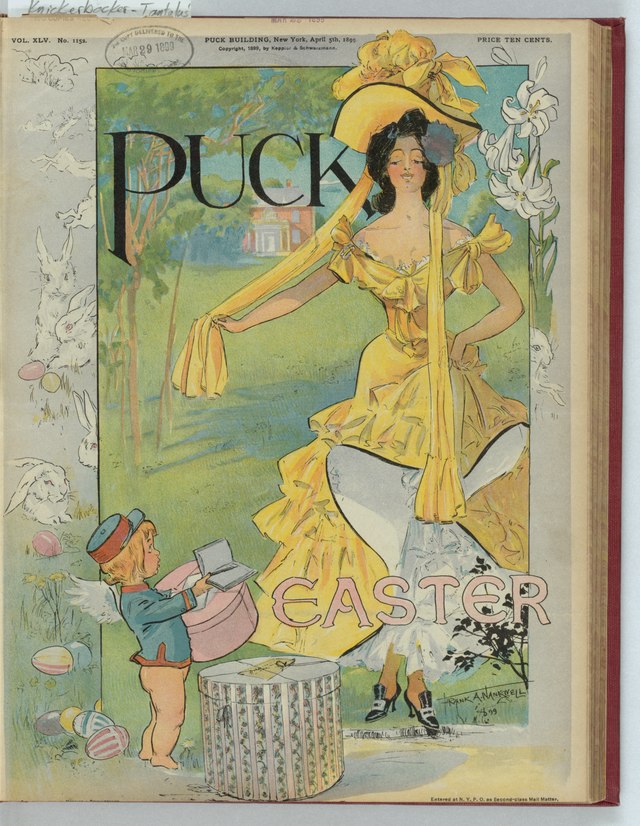
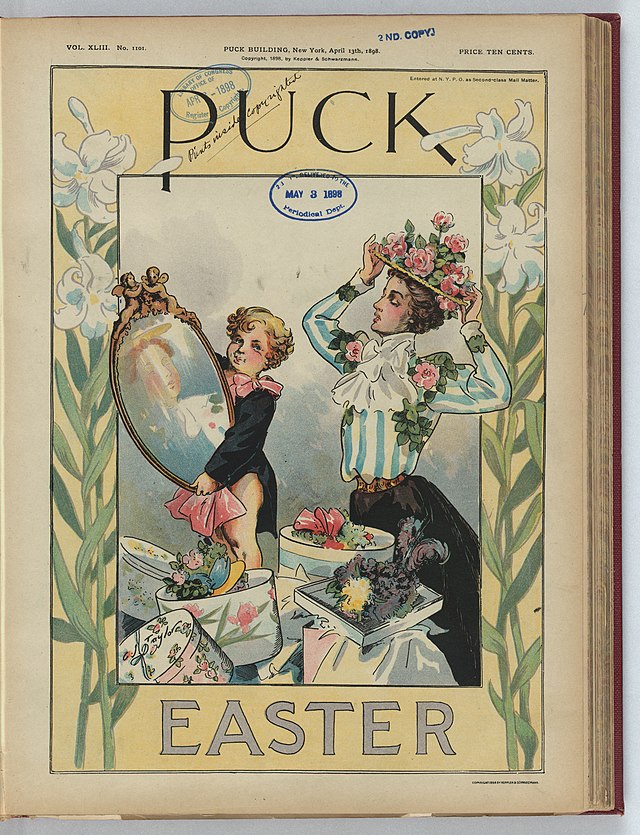
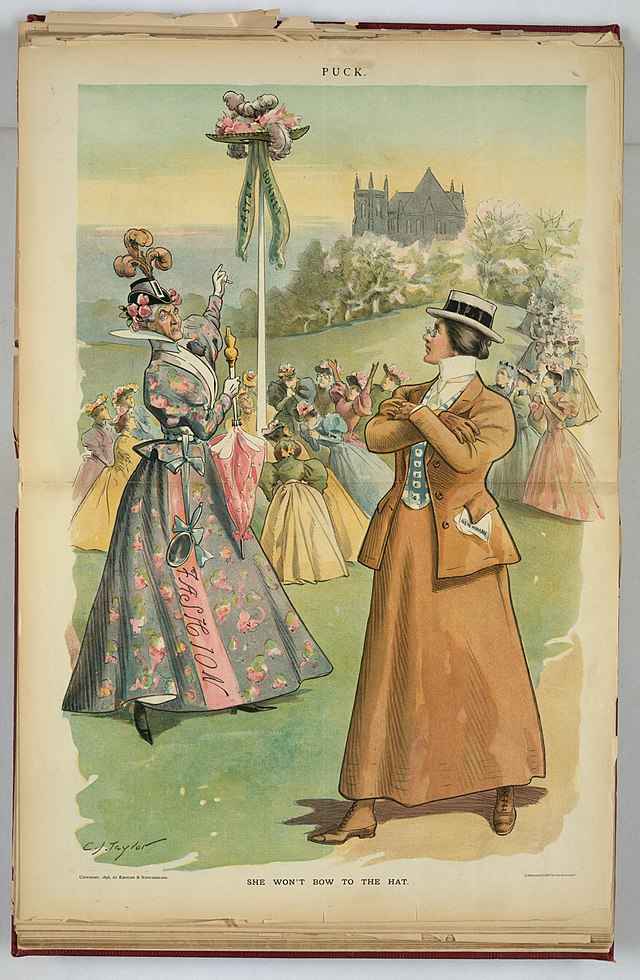
Indeed, even at the turn of the century, Easter bonnets were already starting to lean on the side of “a bit much.” A 1902 issue of The San Francisco Chronicle reads:
“Bright the Easter hats may seen, and too large and too wonderfully trimmed, but the brilliancy may be partially explained away under the supposition of contrast. The winter hat was dark and the Easter hat is light. Seen together, one following the other directly, the hats of Easter seen too bright for good taste, but later, when all are wearing them, and the colors are rivaled by the rays of the sun, they still seem none too loud.”
Easter Parade
Love of Easter bonnets was brewing. And just as the use of hats for daily or even formal use was beginning to hit a major decline, Judy Garland appeared on the big screen in a BIG Easter bonnet in the film Easter Parade. Full transparency: I haven’t seen the film, but I am quite familiar with the biography of Garland and know that this film was a career highlight. It was one of the biggest box office hits of the year and one of the top-grossing musicals of the 1940s, and that is saying a LOT.
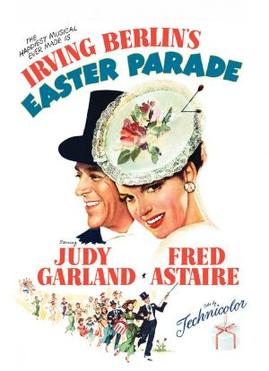
I don’t yet know the ins and outs of the plot (though who knows – it could make for a great upcoming blog post), what I do know is that it begins with an Easter scene, includes multiple scenes with Judy Garland in fantastic Easter bonnets, and apparently ends with a chocolate egg in a top hat (thank you for the synopsis Wikipedia). And I know it inspired a surge in interest in classy and campy easter hats that is remembered today.
Easter Bonnets Trend: 1940s-1950s
The popularity of Easter Parade created new traditions that were embraced by the American public. We saw this dynamic with the film Christmas in July and have more recently seen it with the popularity of “May the 4th Be With You.” While the tradition of Easter bonnets was well-loved before the film’s popularity, it hadn’t yet seen the heyday that would be the 1940s-1960s.
During these Golden Years in media history, the tradition of Easter bonnets very much went from elegant to over the top, with the goal often being to come up with the most head-turning and/or creative hat. A lot of the focus was still on the NYC Easter Parade, which also peaked in popularity around the time, but local celebrations and competitions were held, and Easter bonnets were featured in fashion magazines as well. Here are some of my favorites.
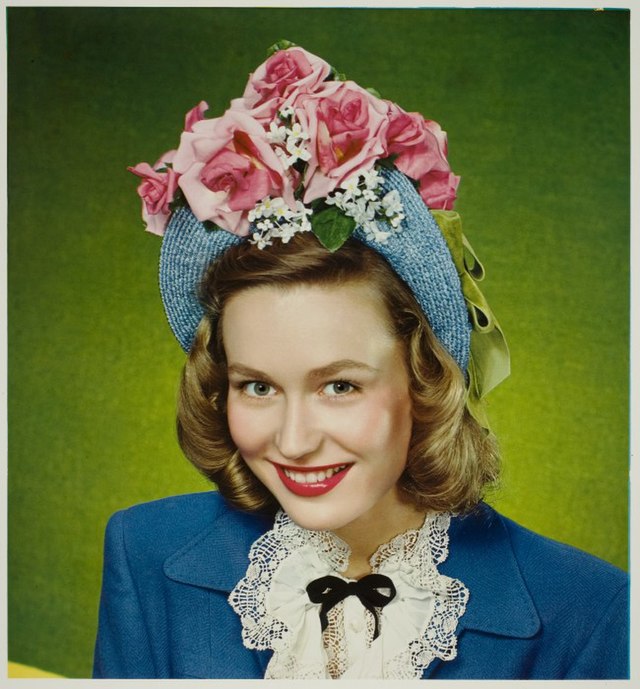

Image source: Vintage News Daily
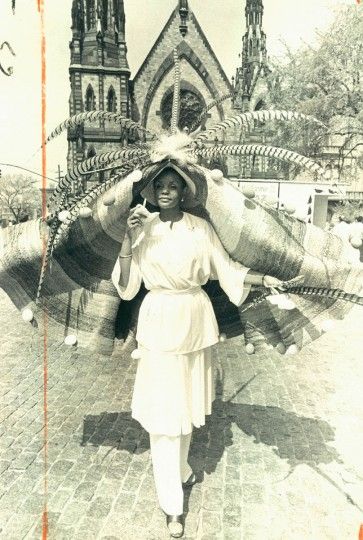
Image source: The Eternal Hedonist
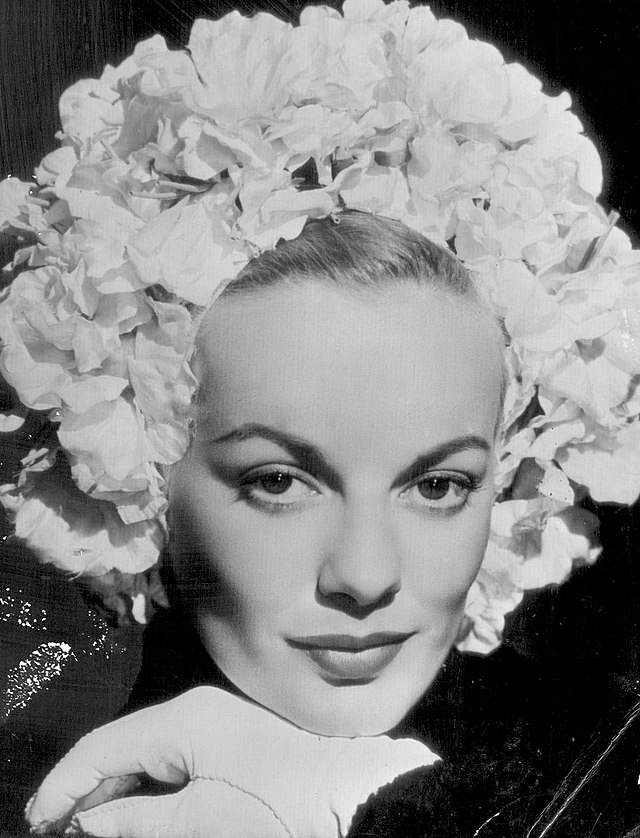
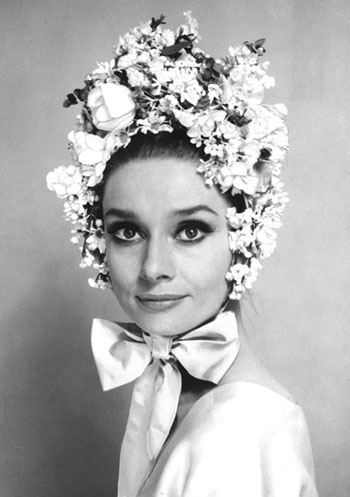
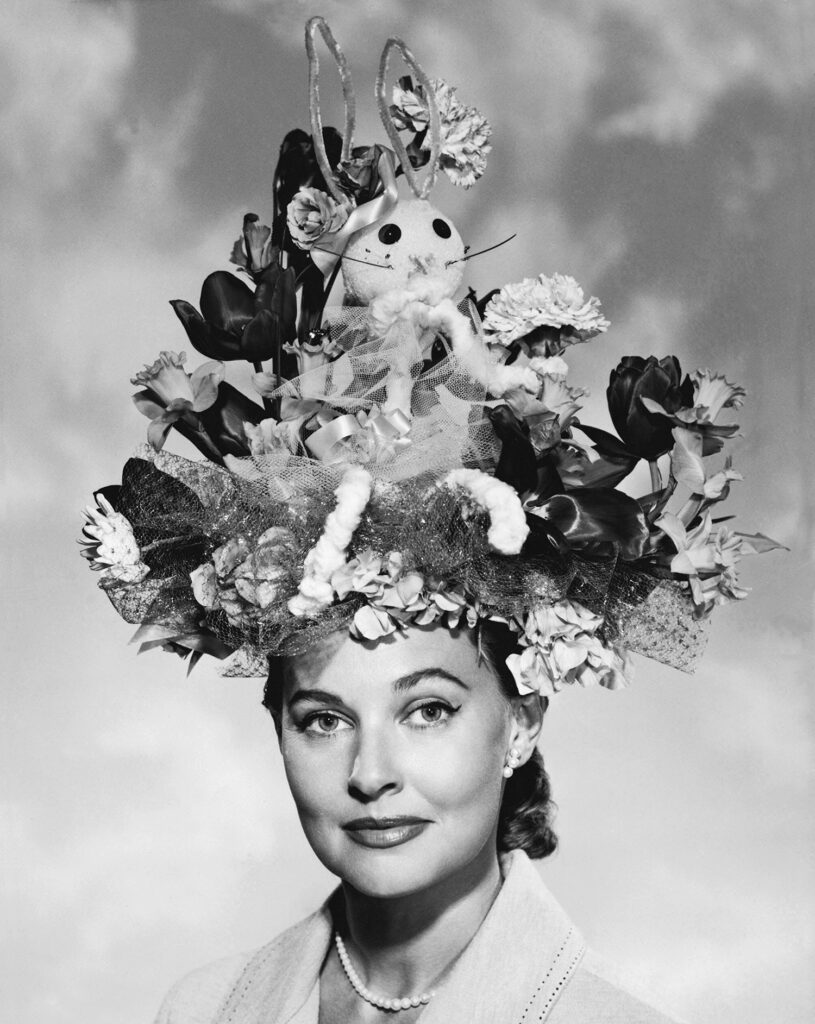
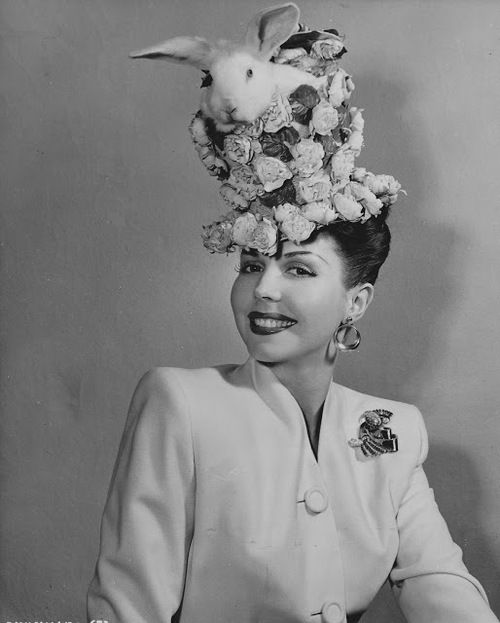
More fashion fun from the past:
As American as apple pie: The 1939 World’s Fair World of Fashion

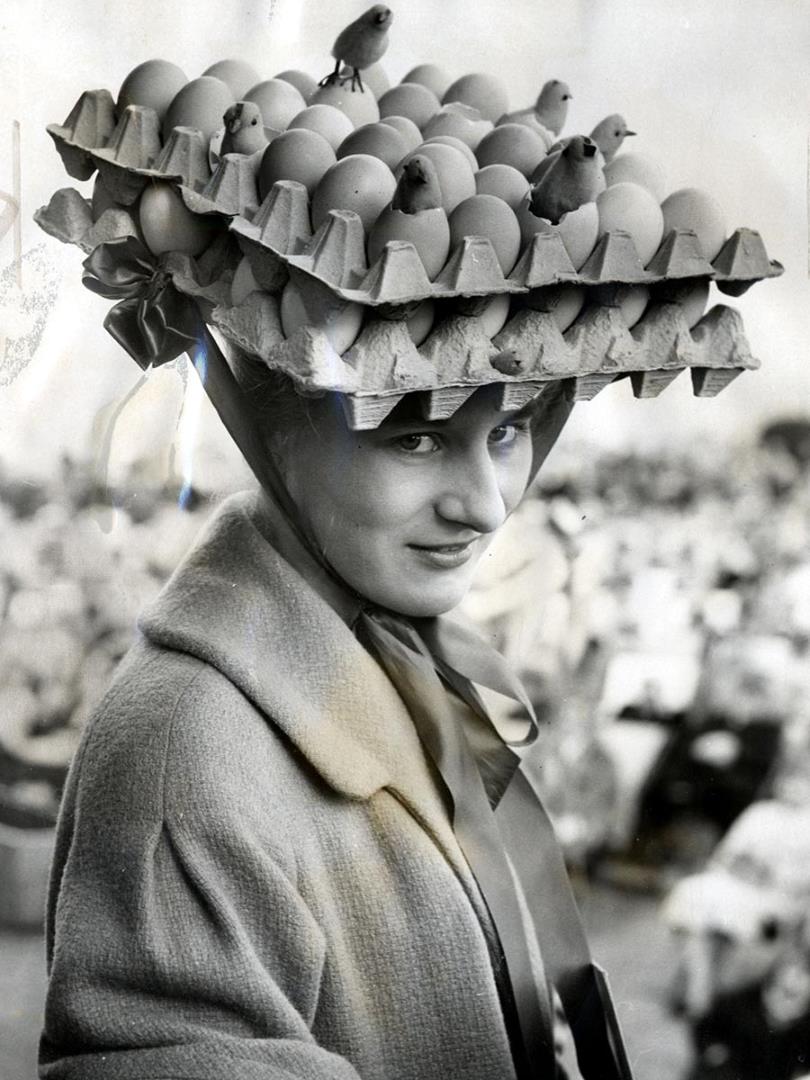


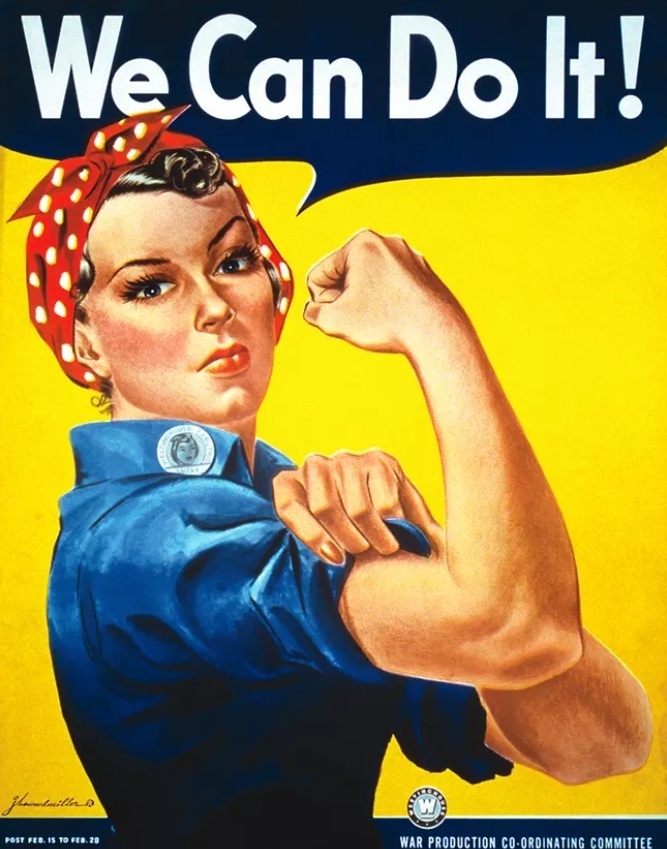









Dear Ms Formichella,
Thank you for another irresistible blog entry. My wife and I both enjoy wearing hats. In fact I tend to feel a little uneasy without some sort of hat. If you’ll forgive me for jumping from Easter bonnets to hats in general, then I’ll make another leap. I fervently encourage you to watch /Easter Parade/ and /Summer Stock/. Both films feature Judy Garland – playing opposite Fred Astaire and Gene Kelly respectively. Not to be missed!
Kind regards,
A. N. Admirer